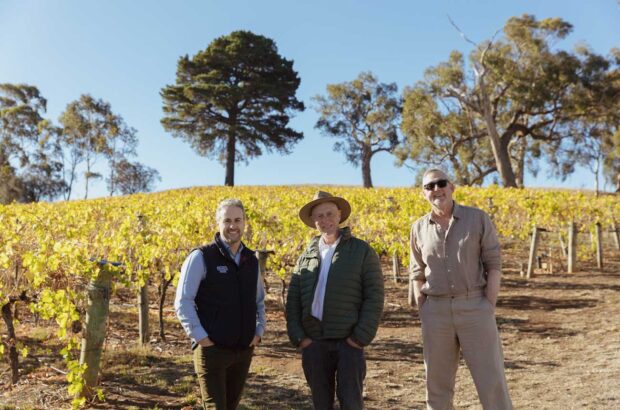There is a Port for all seasons if you know where to look. Often thought of as an after-dinner, fireside drink, Port can be enjoyed in multiple ways depending on the character of the wine.
There is a pyramid of different Port styles, from vibrant youthful ruby to venerable aged-tawny and vintage. Port is often thought of as a heavy winter drink, but aged tawnies, colheitas and mature vintage Ports can be supremely elegant and refined.
White Port and tonic (also known as Portonic) and tawnies (served slightly chilled) are just as well-suited for warm summer days as a ruby or a full-bodied LBV is for the winter months. Such wines have never been more in demand.
This style guide climbs the Port pyramid, surveying the latest trends. It will point you to the right Port for any occasion, winter or summer.
Surprise the wine connoisseur in your life this Christmas with a Decanter Premium subscription
Ruby
Named after its youthful colour, a ruby Port will be a blend of wines from more than one year. It is aged in bulk for up to three years and bottled young to capture its strong, fiery personality.
Reserve
A blend of premium-quality wines often aged for slightly longer than a basic ruby before bottling: giving a rich, satisfying Port. A reserve tawny is a blended wine that has spent about seven years in wood. It can be excellent value compared to wines bottled with an indication of age.
Crusted
So-called because of the deposit (or ‘crust’) that the wine throws in bottle. Crusted Ports are a blend of wines from two or three harvests aged in large oak vats for two to four years (though surprisingly there is nothing in the regulations on this). Like a vintage Port, they are bottled without any fining or filtration. The only significant date on the label is the year of bottling. Most crusted Ports are ready to drink with five or six years of bottle age and will last for another decade. The British houses make a speciality of this style. Excellent value: crusted is poor man’s vintage Port!
White
Made from white grapes. Most are bottled young but some whites are capable of wood age. Those wines may now be bottled with the same age indications as tawny Ports or as a colheita (see below). White Port and tonic is a revitalsing summer drink, served with a twist of lemon and a sprig of mint. If you use an older wood-aged wine, your Portonic takes on the bitter-sweet character of a Negroni.
Pink
This style of Port was pioneered by Croft and has been adopted, not without controversy, by most shippers. It is made by cooling fermenting grape must, which has had minimal skin contact. Serve pink Port over ice or use as a mixer.
Cheese and Port matching guide
Port 2018: A buyer’s guide
Late Bottled Vintage (LBV)
Late Bottled Vintage means just what it says on the label: wwine from a single year that’s bottled between four and six years after the vintage. It’s produced in much larger volumes than either classic vintage or single-quinta vintage (see below). Two different styles of LBV Port have emerged.
The modern style of LBV was founded by Taylor’s in the mid-1960s and quickly became a commercial success. These wines are aged in large vats and are subject to fining and filtration prior to bottling. This prevents the formation of a crust or sediment in bottle, which removes the need to decant.
During the 1990s there was a counter-trend towards so-called ‘traditional’ or unfiltered LBV. These wines are aged in the same way but bottled without any filtration. Unfiltered wines are more structured and full-bodied than LBVs that have been filtered. They have the capacity to age for five to 10 years in bottle. They are bottled with a driven cork – as opposed to the stopper cork for LBVs that are bottled for immediate drinking.
An LBV may also be sold as ‘bottle matured’: aged in bottle for a minimum of three years before their release. Warre’s and Smith Woodhouse have made a specialty of this style. The wines share something of the depth and character and maturity of a true vintage Port at a fraction of the price.

Bottles at Graham’s Port Lodge in Vila Nova de Gaia, Portugal.
Vintage Port
Seen by many as the pinnacle of the Port pyramid. Many shippers have built (and occasionally destroyed) their international reputation on the back of vintage Port. The skill in making a great vintage Port comes from the strict selection of small lotes (parcels) of wine from the very finest locations made from grapes picked at optimum ripeness after an outstanding growing season. These grapes need to be very well worked during vinification, either foot-trodden in traditional stone lagares or increasingly subject to careful piston extraction or robotic treading. Graham’s 2000 was the first classic vintage Port to be partially made by robotic feet.
After the harvest these wines are monitored for a potential vintage. The decision to ‘declare’ a vintage is made independently by the shipper and it is not one that is taken lightly. There is no law about the regularity of Port vintages but there are usually three or four a decade. However, over the past decade there has been a string of fully or partially declared years including 2011, 2015, 2016, 2017, 2018 and 2019.
Port vintage guide: 2000-2022
Port vintage guide: 1960-1999
Quantities are limited and a major shipper may declare anything from a few hundred cases to 15,000 cases depending on the year and circumstances. Sometimes the quantity declared is much less.
There is a recent trend towards declaring super-premium wines from a site-specific plot in a particular vineyard (often alongside a classic declaration). Quinta do Noval Nacional, from a tiny plot of ungrafted vines, is the historic prototype for this sub-category of wines. It now includes Taylor’s Quinta de Vargellas Vinha Velha, Graham’s Stone Terraces and Quinta de la Rosa’s Vale do Inferno. The total quantity declared of each wine is usually no more than 250 cases, and prices are commensurate. These are the ultimate collector’s wines!

Quinta do Noval
Before a Port can be bottled as a vintage it must be submitted to the IVDP (Instituto dos Vinhos do Douro e Porto) for approval. This can happen anytime between 1 January and 30 September in the second year after the harvest. Once the wine has been bottled it continues to evolve slowly over a period of at least 15 to 20 years or more, before it is considered ready to drink.
Rather like the seven ages of man, vintage Port enjoys a short, fragrant bloom of youth before it shuts down and goes through 10 to 20 years of surly adolescence. Then it slowly emerges as an adult gaining in gravitas until it reaches its peak, often between 20 and 40 years of age.
For the finest wines the peak becomes a long plateau and old age may not be reached for 80 years or more. Anyone born in one of the great post-war vintages of 1945, 1955, 1963, 1966 and 1970 has a wine to accompany them for life!
Since the early 2000s, a dramatic improvement in the quality of the fortifying spirit (which, it is easy to forget, makes up 20% of the wine) has altered the flavour profile of vintage Port. The spirit being used to fortify vintage and single-quinta vintage Port has a much more vinous character than in the past.
This means that it interferes much less with the fruit in a young wine than the coarse, rather oily spirit used previously. Certainly recent declared vintages such as 2007 and 2011 are notable for the purity and clear expression of fruit, even at this early stage. David Guimaraens, head winemaker for The Fladgate Partnership, maintains that the transition from youth to maturity will be much smoother in future, with less of that awkward adolescent stage. This should make vintage Port easier to broach at an earlier stage but the best wines should still age for a lifetime.
Vintage port 2000 and 2003: panel tasting results
Single-Quinta Vintage Port
With huge improvements in winemaking from the 1980s onwards, the production of a good vintage Port is much less of a hit-and-miss affair. Unless the year is a total washout (eg 1993 and 2002), wines of potential vintage quality can be made every year. Consequently wines from good years (in between declared vintages) are bottled by the major shippers as single-quinta vintage Port (SQVP). The same rules apply as to vintage Ports, the only difference being that the wines come from a single quinta or estate with the recommendation that they may be drunk earlier, after 10 rather than 20 years.
Without the collector’s cachet of a vintage Port, these wines are excellent value and by building up a vertical collection you can follow a specific Douro terroir. A handful of independent quintas are now producing their own SQVP nearly every year, along the lines of a Bordeaux château. Although this is a relatively new category, look out for properties that already have a good track record: Quinta do Vesúvio, Quinta de la Rosa, Quinta de Roriz, Quinta do Crasto, Quinta do Passadouro and Quinta do Vale Meão.

Touriga Nacional vines at Quinta de Roriz
Aged Tawny
Sharing the pinnacle with vintage Port, it has been said that whereas vintage is the ‘king’ of Ports, tawny is the ‘queen’. The ageing process is of vital importance. While a vintage Port will mature for a short time in large wooden vats and then in bottle; tawnies will age for much longer in small casks before bottling. These casks, known as lodge pipes, have 600- to 640-litre capacity.
The wines undergo a steady process of controlled oxidation and esterification as the colour fades from deep, opaque ruby to orange-amber-tawny. The tasting and blending of an aged tawny is a continual process. Wines set aside initially are often marked with the year of the harvest (‘colheita’). But as the shipper makes up new blends followed by blends of blends, the characteristics of individual wines gradually meld into the house style.
Tawnies may be bottled with an indication of age: 10, 20, 30, 40 or 50 years old. Even older wines may be designated ‘Very Very Old Tawny’. The age designations are obviously approximations and all wines have to be submitted for tasting by the IVDP for approval.
I adore the intricacy and delicacy of a well-aged tawny. A 20 Year Old is my preference, for its complexity offset by freshness. But there are some increasingly good 30, 40 and 50 year old wines as well, that don’t seem to have sacrificed their balance with age.
Port shippers often opt to drink a gently chilled tawny after lunch in the heat of the Douro. Think of aged tawny as a summer alternative to a fireside glass of vintage or LBV.

The Kopke cellars have large reserves of old Ports
Colheita
Meaning ‘harvest’ in Portuguese, colheita is a wine from a single year, aged in wood for a minimum of seven years before bottling. By this time the wine begins to take on the characteristics of a tawny. Most colheitas are aged for much longer and, with careful nurture, may be bottled after 50 or 100 years.
Two dates appear on the label: the year of harvest and the year of bottling. The latter is significant as the wine won’t generally improve in bottle – although after prolonged ageing in wood it won’t deteriorate quickly either.
Once the preserve of a select group of so called ‘Portuguese shippers’ (Barros, Burmester Cálem, Kopke, Krohn) colheitas have been taken up enthusiastically by the British shippers, sometimes bottled under the name ‘single harvest’. Serve colheitas cellar-cool, like a tawny.
Decanter Premium is the perfect last-minute gift for wine lovers!
Port styles: 18 top wines to try
Listed by style







